- Home
- Toni Morrison
The Source of Self-Regard Page 22
The Source of Self-Regard Read online
Page 22
The opening sentence of Tar Baby, “He believed he was safe,” is the second version of itself. The first, “He thought he was safe,” was discarded because “thought” did not contain the doubt I wanted to plant in the reader’s mind about whether or not he really was—safe. “Thought” came to me at once because it was the verb my parents and grandparents used when describing what they had dreamed the night before. Not “I dreamt” or “It seemed” or even “I saw or did” this or that—but “I thought.” It gave the dream narrative distance (a dream is not “real”) and power (the control implied in “thinking” rather than “dreaming”). But to use “thought” seemed to undercut the faith of the character and the distrust I wanted to suggest to the reader. “Believe” was chosen to do the work properly. And the person who does the believing is, in a way, about to enter a dream world, and convinces himself, eventually, that he is in control of it. He believed; was convinced. And although the word suggests his conviction, it does not reassure the reader. If I had wanted the reader to trust this person’s point of view I would have written “He was safe.” Or, “Finally, he was safe.” The unease about this view of safety is important because safety itself is the desire of each person in the novel. Locating it, creating it, losing it.
You may recall that I was interested in working out the mystery of a piece of lore, a folktale, which is also about safety and danger and the skills needed to secure the one and recognize and avoid the other. I was not, of course, interested in retelling the tale; I suppose that is an idea to pursue, but it is certainly not interesting enough to engage me for four years. I have said, elsewhere, that the exploration of the Tar Baby tale was like stroking a pet to see what the anatomy was like but not to disturb or distort its mystery. Folklore may have begun as allegory for natural or social phenomena; it may have been employed as a retreat from contemporary issues in art; but folklore can also contain myths that reactivate themselves endlessly through providers—the people who repeat, reshape, reconstitute, and reinterpret them. The Tar Baby tale seemed to me to be about masks. Not masks as covering what is to be hidden, but how masks come to life, take life over, exercise the tensions between themselves and what they cover. For Son, the most effective mask is none. For the others the construction is careful and delicately borne, but the masks they make have a life of their own and collide with those they come in contact with. The texture of the novel seemed to want leanness, architecture that was worn and ancient like a piece of mask sculpture: exaggerated, breathing, just athwart the representational life it displaced. Thus, the first and last sentences had to match, as the exterior planes match the interior, concave ones inside the mask. Therefore “He believed he was safe” would be the twin of “Lickety-split. Lickety-split. Lickety-lickety-lickety-split.” This close is (1) the last sentence of the folktale, (2) the action of the character, (3) the indeterminate ending that follows from the untrustworthy beginning, (4) the complimentary meter of its twin sister (u u / u u / with u u u / u u u /), and (5) the wide and marvelous space between the contradiction of those two images: from a dream of safety to the sound of running feet. The whole mediated world in between. This masked and unmasked; enchanted, disenchanted; wounded and wounding world is played out on and by the varieties of interpretation (Western and Afro-American) the Tar Baby myth has been (and continues to be) subjected to. Winging one’s way through the vise and expulsion of history becomes possible in creative encounters with that history. Nothing, in those encounters, is safe, or should be. Safety is the fetus of power as well as protection from it, as the uses to which masks and myths are put in Afro-American culture remind us.
“124 was spiteful. Full of a baby’s venom.”
In beginning Beloved with numerals rather than spelled out numbers, it was my intention to give the house an identity separate from the street or even the city; to name it the way “Sweet Home” was named; the way plantations were named, but not with nouns or “proper” names—with numbers instead because numbers have no adjectives, no posture of coziness or grandeur or the haughty yearning of arrivistes and estate builders for the parallel beautifications of the nation they left behind, laying claim to instant history and legend. Numbers here constitute an address, a thrilling enough prospect for slaves who had owned nothing, least of all an address. And although the numbers, unlike words, can have no modifiers, I give these an adjective—“spiteful” (there are two other modifiers of 124). The address is therefore personalized, but personalized by its own activity, not the pasted on desire for personality.
Also there is something about numerals that makes them spoken, heard, in this context, because one expects words to read in a book, not numbers to say, or hear. And the sound of the novel, sometimes cacophonous, sometimes harmonious, must be an inner-ear sound or a sound just beyond hearing, infusing the text with a musical emphasis that words can do sometimes even better than music can. Thus the second sentence is not one: it is a phrase that properly, grammatically, belongs as a dependent clause with the first. Had I done that, however (“124 was spiteful, full of a baby’s venom,” or “124 was full of a baby’s venom”), I could not have had the accent on “full” (/ u u / u / u pause u u u u / u).
Whatever the risks of confronting the reader with what must be immediately incomprehensible in that simple, declarative authoritative sentence, the risk of unsettling him or her, I determined to take. Because the in medias res opening that I am so committed to is here excessively demanding. It is abrupt, and should appear so. No native informant here. The reader is snatched, yanked, thrown into an environment completely foreign, and I want it as the first stroke of the shared experience that might be possible between the reader and the novel’s population. Snatched just as the slaves were from one place to another, from any place to another, without preparation and without defense. No lobby, no door, no entrance—a gangplank, perhaps (but a very short one). And the house into which this snatching—this kidnapping—propels one changes from spiteful to loud to quiet, as the sounds in the body of the ship itself may have changed. A few words have to be read before it is clear that “124” refers to a house (in most of the early drafts, “The women in the house knew it” was simply “The women knew it”; “house” was not mentioned for seventeen lines), and a few more have to be read to discover why it is spiteful, or rather the source of the spite. By then it is clear, if not at once, that something is beyond control, but is not beyond understanding since it is not beyond accommodation by both the “women” and the “children.” The fully realized presence of the haunting is both a major incumbent of the narrative and sleight of hand. One of its purposes is to keep the reader preoccupied with the nature of the incredible spirit world while being supplied a controlled diet of the incredible political world.
The subliminal, the underground life of a novel is the area most likely to link arms with the reader and facilitate making it one’s own. Because one must, to get from the first sentence to the next, and the next and the next. The friendly observation post I was content to build and man in Sula (with the stranger in the midst), or the down-home journalism of Song of Solomon, or the calculated mistrust of the point of view in Tar Baby would not serve here. Here I wanted the compelling confusion of being there as they (the characters) are; suddenly, without comfort or succor from the “author,” with only imagination, intelligence, and necessity available for the journey. The painterly language of Song of Solomon was not useful to me in Beloved. There is practically no color whatsoever in its pages, and when there is, it is so stark and remarked upon, it is virtually raw. Color seen for the first time, without its history. No built architecture as in Tar Baby; no play with Western chronology as in Sula; no exchange between book life and “real” life discourse with printed text units rubbing up against seasonal black childtime units as in The Bluest Eye. No compound of houses, no neighborhood, no sculpture, no paint, no time, especially no time because memory, prehistoric memory, has no time. There is j
ust a little music, each other, and the urgency of what is at stake. Which is all they had. For that work, the work of language is to get out of the way.
I hope you understand that in this explication of how I practice language is a search for and deliberate posture of vulnerability to those aspects of Afro-American culture that can inform and position my work. I sometimes know when the work works, when nommo has effectively summoned, by reading and listening to those who have entered the text. I learn nothing from those who resist it, except, of course, the sometimes fascinating display of their struggle. My expectations of and my gratitude to the critics who enter, are great. To those who talk about how as well as what; who identify the workings as well as the work; for whom the study of Afro-American literature is neither a crash course in neighborliness and tolerance, nor an infant to be carried, instructed, or chastised or even whipped like a child, but the serious study of art forms that have much work to do, and which are already legitimatized by their own cultural sources and predecessors—in or out of the canon—I owe much.
For an author, regarding canons, it is very simple: in fifty, a hundred, or more years his or her work may be relished for its beauty or its insight or its power, or it may be condemned for its vacuousness and pretension—and junked. Or in fifty or a hundred years the critic (as canon builder) may be applauded for his or her intelligent scholarship and powers of critical inquiry. Or laughed at for ignorance and shabbily disguised assertions of power—and junked. It’s possible that the reputations of both will thrive, or that both will decay. In any case, as far as the future is concerned, when one writes, as critic or as author, all necks are on the line.
NOTES
1. See “Race,” Writing, and Difference, ed. Henry Louis Gates (Chicago: University of Chicago Press, 1986).
2. Among many examples, They Came Before Columbus, The African Presence in Ancient America by Ivan Van Sertima (New York: Random House, 1976), xvi–xvii.
3. Tzvetan Todorov, “ ‘Race,’ Writing, and Culture,” translated by Loulou Mack, in Gates, “Race,” Writing, and Difference, 370–80.
4. Terrence Rafferty, “Articles of Faith,” New Yorker, May 16, 1988, 110–18.
5. Martin Bernal, Black Athena: The Afroasiatic Roots of Classical Civilization, vol. 1, The Fabrication of Ancient Greece 1785–1985 (New Brunswick, NJ: Rutgers University Press, 1987), 2.
6. Ibid., 310.
7. Ibid., 337.
8. See Michael Paul Rogin, Subversive Genealogy: The Politics and Art of Herman Melville (Berkeley: University of California Press, 1985), 15.
9. Ibid., 107 and 142.
10. Ibid., 112.
* Author’s note: Older America is not always distinguishable from its infancy. We may pardon Edgar Allan Poe in 1843 but it should have occurred to Kenneth Lynn in 1986 that some young Native American might read his Hemingway biography and see herself described as a “squaw” by this respected scholar, and that some young men might shudder reading the words “buck” and “half-breed” so casually included in his scholarly speculations.
Academic Whispers
AT SOME TIME in the late eighties, I began to feel an uneasiness about what seemed to me a whispered conversation taking place within the study of African American literature, between students and masters of its scholarship; it appeared to be a private agreement about the true purpose of the discourse. My unease about this sotto dialogue was exacerbated by another blatant one that attacked and suborned the legitimacy of African American literature as a field of study. Both dialogues—the covert one and the blatant one—drove the debates on canon formation.
Back in the eighties I was not eager to think through my anxiety about the shape the debate was taking—the politics of identity versus the politics of identitylessness, sometimes known as “universality”—because I was not willing to be distracted into that old and sad routine that African American artists and scholars so often believe themselves forced to undertake: the routine of defending, forever defending, their right to exist. It was such a tedious battle, so unoriginal, so enervating it left no time and no strength for the real work of artists and scholars, which is to refine its own creation and go about their own business. I did not want to watch the billow of another toreador’s red cape designed to provoke and thereby trick a force from knowing its own power. I chose rather to focus on how to create nonracist, yet race-specific literature within an already race-inflected language for readers who have been forced to deal with the assumptions of racial hierarchy. I chose to write as though there was nothing to prove or disprove, as though an unraced world already existed. Not to transcend race, or to aspire to some fraudulent “universalism”—a code word that had come to mean “nonblack”—but to claim the liberty of my own imagination. For I have never lived, nor has anyone, in a world in which race did not matter. Such a world, a world free of racial hierarchy, is usually imagined or described as dreamscape, Edenesque, utopian—so remote are the possibilities of its achievement. In hopeful language it has been posited as ideal, a condition possible only if accompanied by the Messiah or located in a protected preserve, rather like a wilderness park, or in the forests of Faulkner’s imagination, where hunting prowess trumps race and class. As an already and always raced writer I knew that I would not, could not, reproduce the master’s voice along with its assumptions of the all-knowing law of the white father. I wanted to figure out how to manipulate, mutate, and control imagistic, metaphoric language (and its syntax) in order to produce something that could be called literature that is free of the imaginative restraints that the racially inflected language at my disposal imposes on me. I don’t mean, of course, simply the avoidance of racial slurs, name-calling, or stereotyping. I mean first to recognize these linguistic strategies, then either to employ or deploy them to achieve a counter effect; to deactivate their lazy, unearned power, to summon other oppositional powers, and liberate what I am able to invent, record, describe, and transform from the straitjacket a racialized society can and does buckle us into. I insisted on writing outside the white gaze, not against it but in a space where I could postulate the humanity writers were always being asked to enunciate. Writing of, about, and within a world committed to racial dominances without employing the linguistic strategies that supported it seemed to me the most urgent, fruitful, challenging work a writer could take on. As I mentioned earlier, imagining a world minus racial dominance or hierarchy appears in literature as an impossible Eden or unreachable utopia, but it has also been described as “barbarism,” as “the end of history,” “futureless,” or doomed to a future of rubbish and declared an already damaged, valueless experience. In other words catastrophe. A naïve, corrupt Jonestown culminating in ignorance, murder, insanity.
Perhaps I was nursing an incipient paranoia, the origin of which I traced to the unusually large number of inquiries to speak to university populations on the issue of racism, and even to address campuses on which some specific and especially craven racial incidents had taken place. I was not simply annoyed by the assumptions of these requests, I was angered to be asked to clarify an area (one of many) about which I know nothing. Of course, I have been a victim of such treatment, but why, I wondered, would anybody ask the victim to explain his torturer? Isn’t such insight best sought from those familiar with its rationale? (Does a rape victim know best how to calm a rapist?) It seemed to me the problem of racism ought to be addressed first by those who know its ins and outs from the privileged seat of its origin. Being asked to spend my time that way (to heal and to be sick) may have disturbed me unduly, but it connected somehow to my perception that the study of African American literature had become, in several quarters (if high school and certain college curricula, syllabi, anthologies, prefaces, headnotes, afterwords, and forewords were an indication) an exercise in the achievement of neighborliness or tolerance through the study of its special kind of pathology, in which the survivor is assumed to be both
patient and physician. And this was where the whispered discourse took place.
With the best intentions in the world, the encounter between African American art and students of literature had developed these subtexts (The Bluest Eye, read in elementary schools, was a case in point, as was its banning). And it was easy to see how two messages—African American art as explications of pathology; African American art as restorative balms to rashes of racism—had been formulated and why. First, the history of black people in the United States has been a brutal one, and its consequences still shake and inform contemporary life. Examining and acknowledging that brutality can and does lend itself to the interpretation of black presence in that history as our pathology and only ours; it can and did lead to the notion that, as a people, we are a problem (the “negro problem” that every black writer from Richard Wright to Ralph Ellison to James Baldwin to Zora Neale Hurston had to comment on—not to mention the verification of literacy that Phillis Wheatley and the authors of slave narratives were required to provide) and it was our job to solve ourselves.
Countering that interpretation of African American studies as vaccination against incipient white racism is another one: African American studies as a field naturally immune from racism. That black life was a cornucopia of treasures, contributions, and constructive indigenous mechanisms beneficial to its community and that these social mechanisms operated as an innocent alternative to the race-bound society surrounding it. It is an interpretation that captures the sense that most African Americans have, that their real life, their nurturing life, their interior life is someplace else—outside its deforming history. And that obstacle-ridden as that life may be, it was clearly one they would choose, if the choice were presented to them. That while many (perhaps even most) African Americans valued the perceived privilege and license of white Americans, very few wanted to trade places if it meant becoming them.

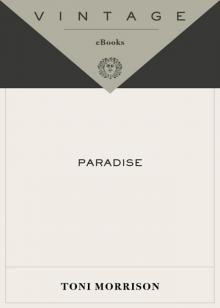 Paradise
Paradise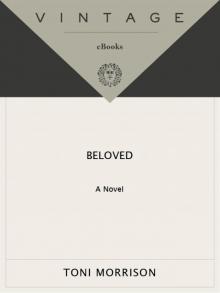 Beloved
Beloved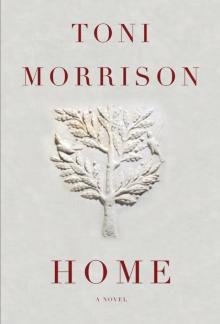 Home
Home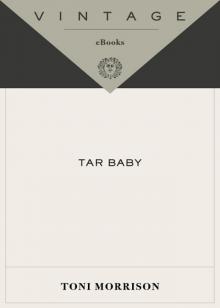 Tar Baby
Tar Baby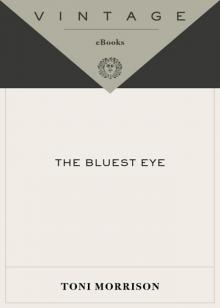 The Bluest Eye
The Bluest Eye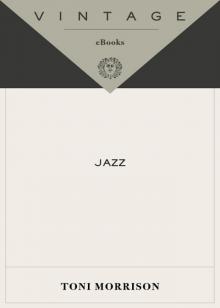 Jazz
Jazz Love
Love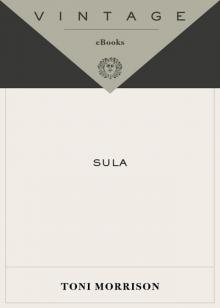 Sula
Sula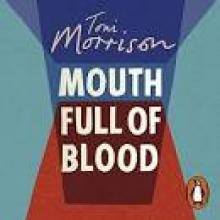 Mouth Full of Blood
Mouth Full of Blood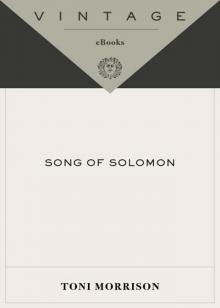 Song of Solomon
Song of Solomon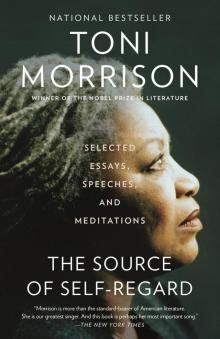 The Source of Self-Regard
The Source of Self-Regard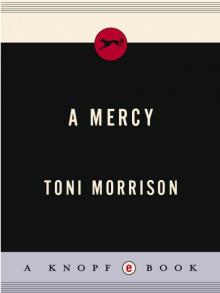 A Mercy
A Mercy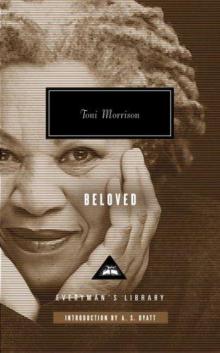 Beloved_a novel
Beloved_a novel